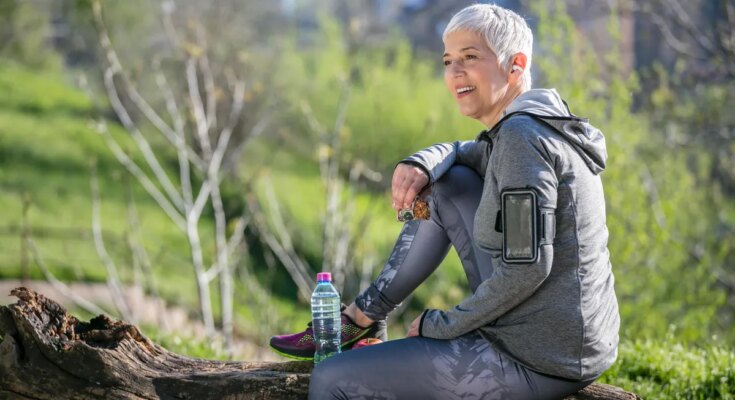Suitable in everyday life
What you still need to do as you get older
Updated 11/23/2025 – 09:44Reading time: 3 minutes

Physical fitness in old age also has a positive effect on life expectancy. Two tests in particular have proven to be important indicators.
Brazilian researchers saw a connection between death and the ability to rise from the ground without using hands. Muscle and bone fitness are the best indicators of mortality, say Claudio Gil Araújo and colleagues from the Clinimex clinic in Rio de Janeiro.
To get the results, the researchers tested 2,000 adults between the ages of 51 and 80. They checked how well the test subjects were able to get up from the floor without using their hands. During the ten year study, 159 participants died. Doctors found that these deaths mostly occurred in people who had low test results. The researchers concluded that the death rate was higher in people who were less physically fit than in those whose muscles and skeleton were well trained.
Therefore, Doctor Araújo recommends that family doctors test their patients’ fitness with simple exercises. All you have to do is ask the patient to get up from the floor without the help of his hands.
A meaningful test to determine fitness status is the six-minute walk test. The task is to walk as fast as possible on a flat track within a six-minute period. A healthy, untrained person can usually run 700 to 800 meters in a set time. Distances covered decrease with age, and women perform slightly worse on average than men.
According to a study published in 2004, all patients suffering from the lung disease COPD should maintain a distance of less than 250 meters. The results also provide insight into the course of lung disease. The 350 meter limit is considered the critical limit. Anyone below this level has a greatly increased risk of death.
“If you want to stay fit even in old age, you have to train your endurance especially,” advises Professor Ingo Frobose from the Health Center at the German Sports University in Cologne. It’s ideal to always challenge your muscles along with your circulation. “If you have difficulty climbing stairs, reacting quickly, or lifting heavy everyday objects, it’s time to start strength training,” says the expert. The method is to simply train the six main muscle groups of the abdomen, back, front and back thighs, arms and shoulders with your own body weight for approximately 15 minutes twice a week, for example with squats and push-ups.
When it comes to resistance training, you should do it in moderation as you get older. Anyone who walks briskly for an hour twice a week, covering a distance of about three kilometers in 30 minutes, is already laying the foundation for healthy aging.


